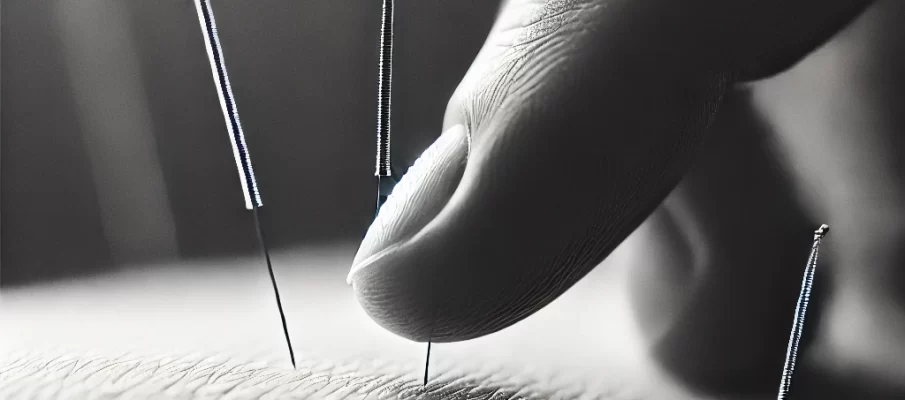Reflective Question:
What would your life look like if you felt balanced, peaceful, and vibrant in mind, body, and spirit?
Holistic healing is about embracing a comprehensive approach to health that considers the whole person—body, mind, and spirit. It’s not just about treating symptoms but finding the root causes of imbalances and nurturing every aspect of your being. Creating a personal holistic healing plan empowers you to take charge of your well-being, align with your natural rhythms, and cultivate a life of harmony and vitality.
Understanding Holistic Healing
Holistic healing acknowledges that health is more than just the absence of disease; it’s a state of complete physical, mental, and social well-being. This approach integrates conventional medicine with alternative therapies and lifestyle changes to support the body’s innate ability to heal itself.
As Dr. Brooke Higgins notes in The Healing Whisper, “Holistic healing is not a destination but a journey—a commitment to understanding and caring for every part of ourselves.”
This philosophy encourages us to take an active role in our health, recognizing that we are our own best healers.
Step 1: Assess Your Current State of Health
The first step in creating a personal holistic healing plan is to assess where you currently stand. Take a moment to reflect on the different aspects of your health:
1. Physical Health:
Consider your energy levels, diet, exercise routine, sleep patterns, and any physical symptoms or chronic conditions. Are there areas where you feel vibrant and strong, and others where you feel drained or unwell?
2. Emotional and Mental Health:
Reflect on your emotional well-being, mental clarity, and stress levels. Do you often feel anxious, overwhelmed, or depressed? Are there patterns of negative thinking or emotional pain that need attention?
3. Spiritual Health:
Think about your sense of purpose, connection to others, and alignment with your values and beliefs. Do you feel connected to a higher power or something greater than yourself? Are you living in a way that feels authentic and fulfilling?
4. Social and Environmental Health:
Evaluate your relationships, community involvement, and the environments you spend time in. Are your relationships supportive and nurturing? Do you feel connected to your community? Is your home a space of comfort and peace?
By honestly assessing each area, you can identify where imbalances may exist and where changes are needed to support your overall well-being.
Step 2: Set Clear, Intentional Goals
Once you have a clear understanding of your current health, the next step is to set intentional goals. Goals give direction to your healing journey and provide motivation to make positive changes.
Visualizing Your Future Self
Imagine yourself two years from now, waking up to a life where you feel balanced, vibrant, and whole. Take a moment to meditate on what a beautiful day looks like for you. From the moment you wake up to the time you lay your head down at night, how do you want to feel? What are you doing? Who are you spending time with? What does your environment look like?
Visualize every detail of this ideal day. Perhaps you wake up feeling refreshed and energized, stretch with a morning yoga practice, and enjoy a nutritious breakfast. You may spend the day doing work that you love, engaging in meaningful conversations, and nurturing your body with healthy meals. Your evening might include meditation, connecting with loved ones, and winding down with a good book before falling asleep peacefully.
As Wayne Dyer famously said, “If you believe it will work out, you’ll see opportunities. If you believe it won’t, you will see obstacles.”
Visualization is a powerful tool in the manifestation process. By clearly envisioning your ideal life, you set the intention to make it a reality. Your mind and body will begin to align with this vision, guiding your actions and decisions toward achieving your goals.
Setting Goals Based on Your Vision
Now, translate this vision into clear, intentional goals that will guide your holistic healing journey, with the help below you can also consider working backwards from your vision. Creating a plan with the completion for two years going backwards and seeing the steps that took to create it until you bring yourself to the present day:
– Physical Health Goals:
These might include improving diet and nutrition, incorporating regular exercise, getting more restful sleep, or managing a chronic health condition. For example, if you often feel fatigued, a goal could be to improve your energy levels by incorporating more whole foods and regular physical activity into your routine.
– Emotional and Mental Health Goals:
Consider goals that address stress management, emotional regulation, or mental clarity. This could involve learning stress-reducing techniques, seeking therapy or counseling, or adopting practices that promote emotional balance, such as journaling or mindfulness.
– Spiritual Health Goals:
Set goals that help you connect with your inner self and a higher purpose. This might include establishing a regular meditation or prayer practice, exploring spiritual teachings, or engaging in activities that bring joy and fulfillment.
– Social and Environmental Health Goals:
Consider goals that enhance your relationships and environments. This could involve building deeper connections with loved ones, participating in community activities, or creating a peaceful, organized living space.
Reflective Question:
What are the most important areas of your life that need healing and attention right now?
Step 3: Choose Holistic Healing Modalities
With your goals in mind, choose the holistic healing modalities that resonate with you and align with your needs. There are countless holistic practices to explore, so select the ones that feel right for you:
1. Nutrition and Diet
A balanced, nourishing diet is the foundation of physical health. Focus on whole foods, such as fruits, vegetables, whole grains, lean proteins, and healthy fats. Avoid processed foods, excess sugar, and artificial additives. Consider incorporating foods with healing properties, such as turmeric for its anti-inflammatory effects or leafy greens for their nutrient density.
Practical Tip: Start by making small changes, such as adding more vegetables to your meals or choosing water over sugary drinks. Gradually transition to a more whole-foods-based diet.
Learn More: Holistic Nutrition: 8 Foods to Feed Your Body, Mind, and Soul
2. Exercise and Movement
Regular physical activity supports physical and mental health. Choose activities that you enjoy, whether it’s walking, yoga, dancing, or strength training. Exercise releases endorphins, reduces stress, and keeps the body strong and flexible.
Practical Tip: Aim for at least 30 minutes of physical activity most days of the week. Find ways to incorporate movement into your daily routine, such as taking the stairs, going for a walk during lunch, or stretching in the morning.
Learn More: Top 5 Yoga Poses for Physical and Mental Wellness
3. Mindfulness and Meditation
Mindfulness and meditation help calm the mind, reduce stress, and promote emotional balance. Begin with just a few minutes a day, focusing on your breath or a mantra. Over time, increase the duration as you become more comfortable with the practice.
Learn More: How to Start a Meditation Practice: 5 Steps for Holistic Health
4. Energy Healing
Energy healing modalities, such as Reiki, acupuncture, or chakra balancing, focus on clearing and balancing the body’s energy fields. These practices can help release emotional blockages, promote relaxation, and enhance overall well-being.
Practical Tip: Consider seeing an acupuncturist, certified energy healer or exploring self-healing techniques. Pay attention to how your body feels after an energy healing session and notice any changes in your energy levels, mood, or physical symptoms.
Learn More: Energy Healing: 4 Key Techniques to Explore
5. Herbal Medicine
Herbal remedies can support various aspects of health, from boosting immunity to calming the mind. Common herbs used in holistic healing include chamomile for relaxation, ginger for digestion, and echinacea for immune support. Always consult with a qualified herbalist or healthcare provider before starting any new herbal treatments.
Practical Tip: Start with gentle, well-known herbs and incorporate them into your daily routine. For example, try drinking chamomile tea before bed to promote relaxation and better sleep.
6. Emotional Healing
Techniques such as journaling, art therapy, or talking with a counselor can help process and release emotional pain. Addressing emotional wounds is crucial for overall healing, as unresolved emotions can manifest as physical symptoms or chronic stress.
Practical Tip: Set aside time each day or week for emotional self-care. This could involve writing in a journal, creating art, or simply talking to a trusted friend about your feelings.
Learn More: Emotional Healing: 7 Techniques to Improve Mental Health
Step 4: Create a Daily Routine
A daily routine helps you incorporate your chosen healing modalities into your life consistently. Routine provides structure and makes it easier to stick with your healing plan. Consider creating a morning and evening routine that supports your goals:
– Morning Routine:
Begin your day with activities that set a positive tone. This might include meditation, gentle stretching, a nutritious breakfast, or setting intentions for the day. A morning routine can help you start the day with clarity and purpose.
– Evening Routine:
Wind down with activities that promote relaxation and prepare you for restful sleep. This could involve turning off screens, taking a warm bath, practicing gratitude, or reading a calming book before falling asleep peacefully. An evening routine helps signal to your body that it’s time to rest and rejuvenate.
Reflective Question:
What daily practices can you commit to that will support your holistic healing journey?
Step 5: Track Your Progress and Adjust
Healing is a dynamic process, and it’s essential to track your progress and make adjustments as needed. Keep a journal to note changes in your physical, emotional, and spiritual health. Reflect on what’s working well and where you may need to make changes.
– Celebrate Small Wins:
Acknowledge and celebrate the small improvements and successes along your healing journey. These milestones are important markers of progress and can boost motivation.
– Be Flexible:
Be open to adjusting your healing plan as you learn more about what works best for you. Healing is not a linear process, and it’s normal to encounter challenges or setbacks. Stay flexible and compassionate with yourself as you navigate your path.
Step 6: Seek Support and Community
Holistic healing is a personal journey, but you don’t have to do it alone. Seek support from like-minded individuals, healthcare professionals, or holistic practitioners. Having a supportive community can provide encouragement, guidance, and accountability.
– Join a Group or Class:
Consider joining a meditation group, yoga class, or holistic healing workshop. These communities offer a space to learn, share experiences, and connect with others who share similar goals.
– Consult with Professionals:
Work with holistic health practitioners, such as naturopaths, acupuncturists, or nutritionists, who can provide personalized guidance and support. Their expertise can help you tailor your healing plan to your unique needs.
Reflective Question:
Who can you reach out to for support and guidance on your holistic healing journey?
The Journey to Wholeness
Creating a personal holistic healing plan is an empowering step toward living a balanced, vibrant, and fulfilling life. By taking the time to assess your health, set intentional goals, and incorporate holistic practices into your daily routine, you nurture every aspect of your being. Remember, healing is a journey, not a destination. It’s about making mindful choices each day that bring you closer to a state of wholeness.
As you embark on this journey, be patient, compassionate, and open to exploring new possibilities. Your body, mind, and spirit are interconnected, and by nurturing each aspect, you create a harmonious and balanced life. Use your vision of your future self as a guide, and remember that you have the power to create a life that feels vibrant, joyful, and whole.













